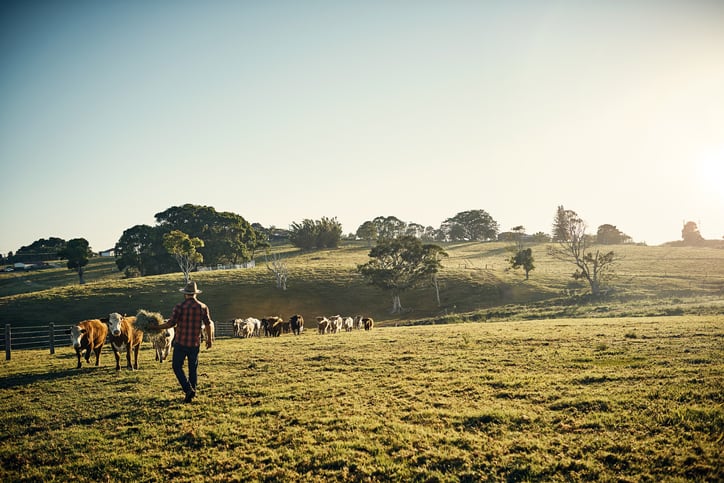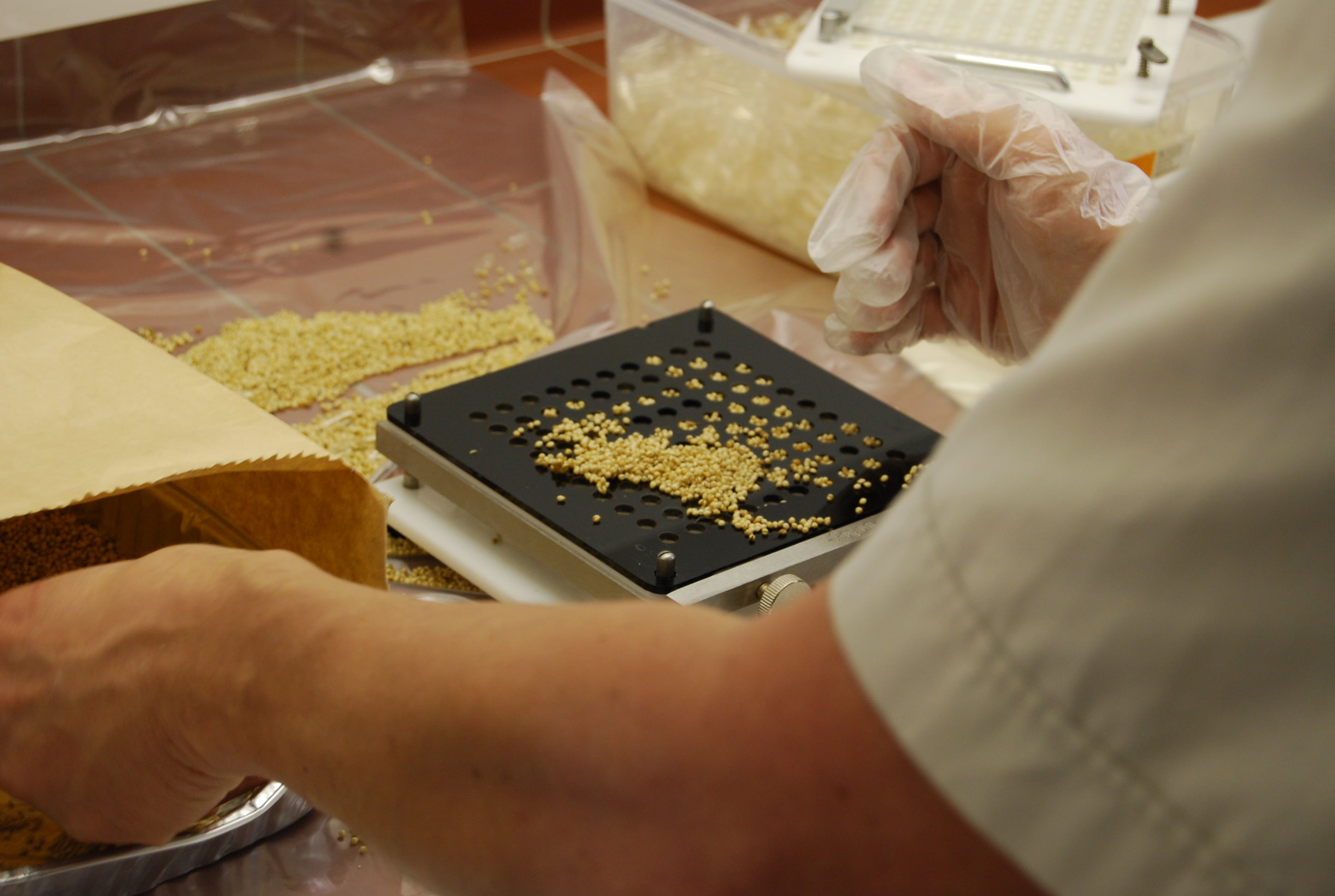That's the view of BioHerbicides Australia (BHA) MD Peter Riikonen, who we are featuring in the second edition of our What We've Learned feature on the most pioneering start-ups in the agtech space.
Based in Queensland, BHA specialises in developing and producing biological herbicides derived from natural sources and designed to control or eliminate unwanted weeds in a sustainable and environmentally friendly manner.
Riikonen relayed BHA’s recent experience working with the University of Queensland (UQ) on the development of a novel herbicide delivery system — in the form of a herbicide-filled capsule — to deal with unwanted trees and woody weeds.
He said: “The initial business of BHA was largely to continue the work that UQ had been doing for number of years. The key technical resources came over from UQ with a very special skill set and experience with plants, fungi and biological processes. The rest of our small team were new to the weed control industry but have had decades of experience in industrial operations and management of other businesses, such as pharmaceutical manufacturing.
“Having an industrial (or commercial) entity working this closely with an academic institution is not common, certainly not in Australia. I believe both parties have only benefited and learnt from the team-up. Research and development (R&D), commercialisation and industrial operation cover a vast amount of information and activities. Being able work though everything with this highly skilful team in an environment where all services are promptly available has been and is a huge benefit.”
Indeed, as academic institutions often bring cutting-edge research and skilled researchers to the table, they can apply their knowledge to real-world problems faced by the industry when partnering with agtech companies. Such collaboration can lead to the development of innovative technologies and solutions that can significantly boost agricultural efficiency and sustainability in Australia.
On their part, industrial or commercial organisations can provide the resources and practical insights needed to bring academic research to market. They understand the industry's needs, market dynamics, and challenges faced by farmers. By working together, academia and industry can bridge the gap between theoretical advancements and practical applications, ensuring that agtech innovations are not just conceptual but also viable and scalable.
Moreover, such collaboration can expedite the development and commercialisation of agtech products. As academic institutions often lack the resources and infrastructure for large-scale production and distribution, partnering with commercial organisations allows for the necessary investments and industry expertise to bring new technologies to market.
Industrial-academic collaboration can also stimulate economic growth by creating new business opportunities, generating jobs and positioning Australia as a leader in agtech innovation. The combined efforts of academia and industry can drive the development of a robust and competitive agtech ecosystem, attracting investment and fostering a culture of continuous innovation.
Herbicidal tendencies
The aforementioned innovative herbicide delivery system developed by BHA and UQ is aimed at tackling unwanted trees and woody weeds. The method involves implanting herbicide-filled capsules directly into the stem of target trees, offering a practical, portable and convenient alternative to existing approaches.
Current herbicide control methods include foliar spraying, basal bark application, cut-stump method and drill-and-fill approaches, each with limitations in effectiveness and environmental impact. The new BHA-UQ technology introduces the Injecta applicator, designed to drill a hole into the trunk, insert the herbicide capsule and seal it, preventing moisture loss and oxidation. This process ensures rapid uptake into the tree's vascular system.
The delivery system minimises wasteful herbicide spraying, protecting non-target plants and reducing environmental and operator exposure. Moreover, the encapsulated herbicide's portability, convenience and safety could revolutionise weed control in various settings. This new technology also has the potential to transform invasive pest management, enhancing worker and environmental safety through targeted and controlled chemical application.

The technology's potential extends beyond weed control, with plans to develop capsules for unwanted insects and fungi in crop and valuable trees, promising significant savings in materials and operational efforts. Di-Bak G (glyphosate) and Di-Bak AM (aminopyralid/metsulfuron) are the available products in Australia, alongside the Injecta applicator, all of which can be purchased through agricultural supplies outlets or directly from BHA.
Riikonen said the UQ School of Agriculture and Food Sustainability (SAFS) had been “an excellent and ideal partner throughout the commercialisation phase”, having provided BHA with a significant area in the campus (Gatton), where BHA had been able to operate and work on developing the product.
He added that BHA had access to the top-tier weed management knowledge, with a good number of large-scale field trials and different studies having been conducted together with both SAFS students and staff. “One big takeaway for BHA is the quality of the evidence data generated in accordance with UQ trial protocols. I believe if the close collaboration with UQ continues, we may see more exciting products and systems brought to market through our close co-operation,” he said.
Developmental challenges
According to Riikonen, after the discovery that a solid dose (i.e., encapsulated powder) of herbicide implanted in the tree stem could translocate throughout the plant, “the actual development work” was “fairly challenge-free”.
“Efforts have been largely in the field, confirming efficacy on as many species as possible. BHA has been very fortunate to have so many interested parties, such as councils, land-care groups, contractors, farmers, landholders, forestry companies and UQ, involved.”
However, he added that the trials had been conducted in “all states around the country” and acknowledged that convincing different companies and institutions to participate in them was “perhaps the biggest challenge”.
Riikonen further said: “There is also an external hurdle that any company bringing new products to market must jump. That is regulatory compliance, which in our case is (with) the Australian Pesticides and Veterinary Medicines Authority (APVMA). The registration process is fairly straightforward for chemical products (but) much more complex for biological products.
“The challenge for BHA was not necessary the registration process but the time it took and having the funds to support the business during those years of waiting. The registration of Di-Bak Parkinsonia (bio-herbicide) took seven years and Di-Bak G (herbicide) two years.”
He also sees challenges when it comes to normalising use of the system in the agriculture sector down under, as the old methods of weed control are “quite entrenched in the Australian agricultural industry”.
“Finding the correct motivator to get clients onboard with a new innovation has been a challenge. Different groups have different drivers as to what might make them try something new. The communication to different industry groups (like farmers, council officials, land-care groups and contractors) has to be tailored and somewhat specific.
“For example, farmers may be motivated by the convenience and the product’s long shelf life, contractors are keen on application efficiency and cost savings, and discussions with land-care groups are all about environmental and operator safety. One proven and truly effective way to get people to know about and use the technology is face-to-face meetings and demonstrations. In such a vast country as Australia, this approach is very time-consuming and expensive.
“But despite this challenge, we have already experienced enormous success. Wherever we present the innovation and its related products, we make new clients. Repeated orders are coming in and customers appear very satisfied with the change in their weed control practices. Still, an ongoing challenge remains, since we have only reached estimated 5% of the potential market.”
Great expectations
Riikonen expects the novel herbicide delivery system to “give the woody weed and unwanted trees ‘control industry’ another tool in its toolbox of control methods”, as well as to have positive environmental impact.
Acknowledging that end-user feedback would attest to BHA’s greatest impact, he said, “Our feedback from operators who are currently using ‘older’ methods — such as mixing the chemicals, carrying them to the site where the control is taking place, spraying, and performing the clean-up — is that our method is clean, efficient, convenient and provides hugely improved safety features and time savings.
“The impact on our environment is also worth noting. No chemicals leak out to the surrounding landscape as a precise dose of the appropriate chemical is completely sealed inside the tree trunk to treat the plant and gets consumed entirely. Through our trials and recent control projects, we have often been surprised at how small a quantity of herbicide can kill a tree.”
In terms of upcoming agtech developments from BHA, Riikonen said the company plans to develop novel ‘tree health’ products and make them available in local and offshore markets, with insectides and fungicides already in development.
He said: “We envisage that they will be available within 12 months. The development of biological herbicides will also continue with UQ and the outcomes of these developments will be announced on a later date.
“The BHA delivery system has applications in many countries and could provide an immediate solution to many operator and environmental safety concerns. This means the very next challenge for BHA is to find appropriate partners to bring our invention to global markets.”



